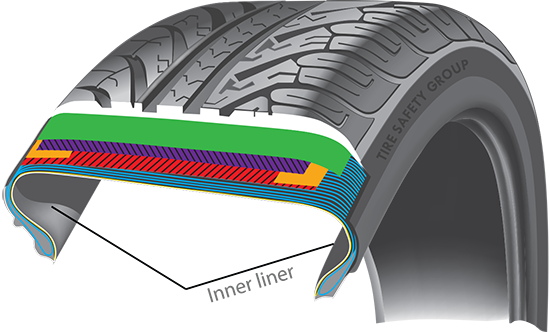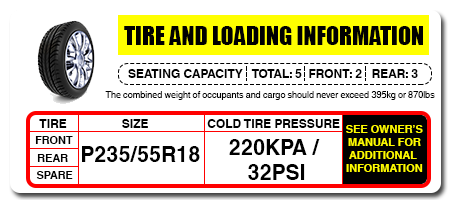Check Tire Pressure Every Month
Posted by Wetherington Law Firm | Articles
- Articles
- Artificial Intelligence
- Car Accidents
- Class Action Lawsuit
- Comparative Negligence
- Crime Victim
- Defective Vehicles
- Disability
- Kratom Death and Injury
- Legal Marketing
- Motor Vehicle Accidents
- News/Media
- Other
- Pedestrian Accidents
- Personal Injury
- Results
- Sexual Assault
- Truck Accidents
- Uber
- Wrongful Death
Categories
Maintaining the proper tire pressure in your tires is crucial to your safety and your pocketbook.
It’s SUPER annoying, but you really should check your tire pressure at least once a month. Most tires lose between 2 and 5 pounds every month. Considering that most passenger tires use approximately 30 pounds of pressure, a minor problem can quickly escalate into a dangerous condition. According to Firestone, “The truth is, tires lose pressure daily.” This problem is further complicated by research from the Rubber Manufacturers Association that states that only one in every six vehicles have four properly inflated tires and only 15 percent of today’s drivers know how to check their tire pressure properly. How important are properly inflated tires when it comes to vehicle safety? According to the National Highway Traffic Safety Administration, under-inflated tires contribute to more than 600 deaths and 33,000 injuries each and every year. And safety isn’t the only issue. Under-inflated tires wreak havoc on fuel economy. The U.S. Department of Energy estimates that under-inflated tires are responsible for wasting more than one billion gallons of gasoline each year.
>>> Sometimes truck accidents can lead to fatalities and serious injuries. Consulting an Atlanta truck accident lawyer early enough can help you secure maximum compensation and your injuries, pain, and suffering.
Why Do Tires Lose Air Pressure?
Tires generally lose air pressure through a process known as permeation that is accelerated in poorly designed tires. Modern tires do not have tubes inside of them like the tires of yesterday. Rather than using tubes, today’s tires have an inner liner that performs the same function as a tube:

If the tire is designed properly with a sufficiently thick halobutyl rubber inner liner, it will keep most moisture and compressed air from escaping. Unfortunately, many tire manufacturers use very thin inner liners and/or insufficient chemical compounds in the inner liner, causing your tires to lose pressure at a faster rate than you may expect.
Checking the Pressure of Your Tires
To check the pressure of your tires, the first thing you need to do is learn how much pressure your tires should have. This can be accomplished by referring to your owner’s manual or the vehicle placard inside your driver’s side doorframe:

The maximum and minimum pressure listed on the tire itself has no bearing on your particular vehicle. Only the placard matters! When inflating a tire, verify that it receives the pressure recommended by the manufacturer of the car, not the manufacturer of the tire itself.
You should also check the pressure of your tires when the tires are cool. If you have been driving, wait at least three hours before checking the pressure of your tires. Once your tires have cooled down, check the pressure to ensure that all four tires and the spare are properly inflated to the pressure specified by your vehicle’s manufacturer. If there has been pressure loss in any of the tires, add air to the tires so they are all at optimal pressure.
While checking the air pressure of your tires, check the tread depth of your tire and visually inspect the tires to ensure there are no nails or other sharp objects embedded in the tires. These objects could poke a hole in the tire and cause an air leak. Also check the sidewalls of the tires to make sure there are no gouges, cuts, bulges, or other irregularities. If any such problems are found, you will want to have it further inspected by a reputable tire service facility for possible replacement.
Cold and Hot Weather Affect Tire Pressure
You will also want to keep in mind that cold weather will cause your tire pressure to drop. The general rule of thumb is that your tire pressure will drop one to two pounds for every 10-degree drop in temperature. If the temperature outside drops 20 degrees, you’ll be losing two to four pounds of tire pressure. If you live in an area where temperatures drop quickly, you’ll want to check your tire pressure to make sure it’s at the proper level.
Five Minutes Can Save You Money and May Save Your Life
The proper inflation of your tires is crucial to your safety and your pocketbook. Make sure you take the time to properly check the pressure of your tires at least once a month. Also check your tire pressure when the weather changes drastically and before taking any long trips. Taking just five minutes out of your day can save money and may possibly save your life.
>>> Sometimes, negligence and accidents can result in the loss of a loved one, consulting an Atlanta wrongful death lawyer can help you secure maximum compensation for your loss and psychological trauma.